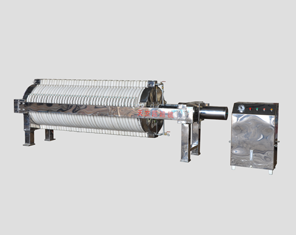1. To ensure the processing quality of the plate and frame filter press. When the parts are roughed, a large amount of metal will be removed, so a large cutting force and cutting heat will occur, and a large clamping force is also required. In these Under the action of force and heat, the parts will be greatly deformed. And the internal stress of the parts after the rough machining of the filter press will be redistributed, which will also cause the parts to deform. And correct the machining errors caused by the above reasons. After distinguishing the processing stage, the errors formed by rough machining can be corrected through semi-finishing and finishing, and gradually improve the machining accuracy and surface quality of the parts, ensuring the machining requirements of the parts.
2. The need for rational use of machine tools. Rough machining generally requires the selection of machine tools with high power, good rigidity, high productivity and low precision. For finishing, machine tools with high precision need to be selected, which can be fully utilized after distinguishing the processing stages. The characteristics of the respective performances of the roughing and finishing equipment can prevent the use of rough and fine equipment, so that the equipment can be used reasonably. This not only improves the production efficiency of roughing, but also helps to maintain the accuracy and service life of the finishing equipment.
3. Find the defects of the blank of the plate and frame filter press in time. Various defects on the blank (such as pores, sand holes, slag inclusion or insufficient machining allowance, etc.) can be found after rough processing, which is convenient for timely repair or decision to scrap, In order to avoid waste of working hours and processing costs after continuous processing.
4. It is easy to organize heat treatment. The heat treatment process distinguishes the processing process into several stages. For example, the fine spindle is subjected to artificial aging treatment to remove stress after rough machining, quenching treatment after semi-finishing, and low-temperature tempering and severe cold treatment after finishing. , and then perform finishing processing. These heat treatments divide the entire processing process into roughing-semi-finishing-finishing-finishing processing stages.

Related News
- Filtration principle and operation of plate and frame filter press
- Different matters that should be paid attention to in the use of the filter plate of the diaphragm filter press
- What is the influence of the working period of the diaphragm filter press?
- The reason for the leakage of the box filter press
- Filter bag replacement and pressure condition of super essential oil filter
- The particularity of filter cloth used in plate and frame filter press
- What is the pressing principle of the diaphragm filter press?
- Introduction to filter maintenance
- What is the filtration speed, operation method and development direction of the filter?
- What is the impact of pump selection and insufficient pressure in filter presses?
- What is the reason for the expansion of the filter plate of the diaphragm filter press?
- Why are diaphragm filter presses expensive and cheap?
- Why can't the diaphragm filter press filter strong materials?
- What are the reasons why the filter belt of the automatic filter press is not clean?
- What should I do if the water seepage between the plate and frame of the filter press is corrected?
- What are the specifications for different filter press specifications?
- Maintenance content of filter press
- Is it harmful for the plate and frame filter press to filter too much?
- The reason and treatment method of the filter plate of the filter press
- The reason for the turbidity of the output of the diaphragm filter press


